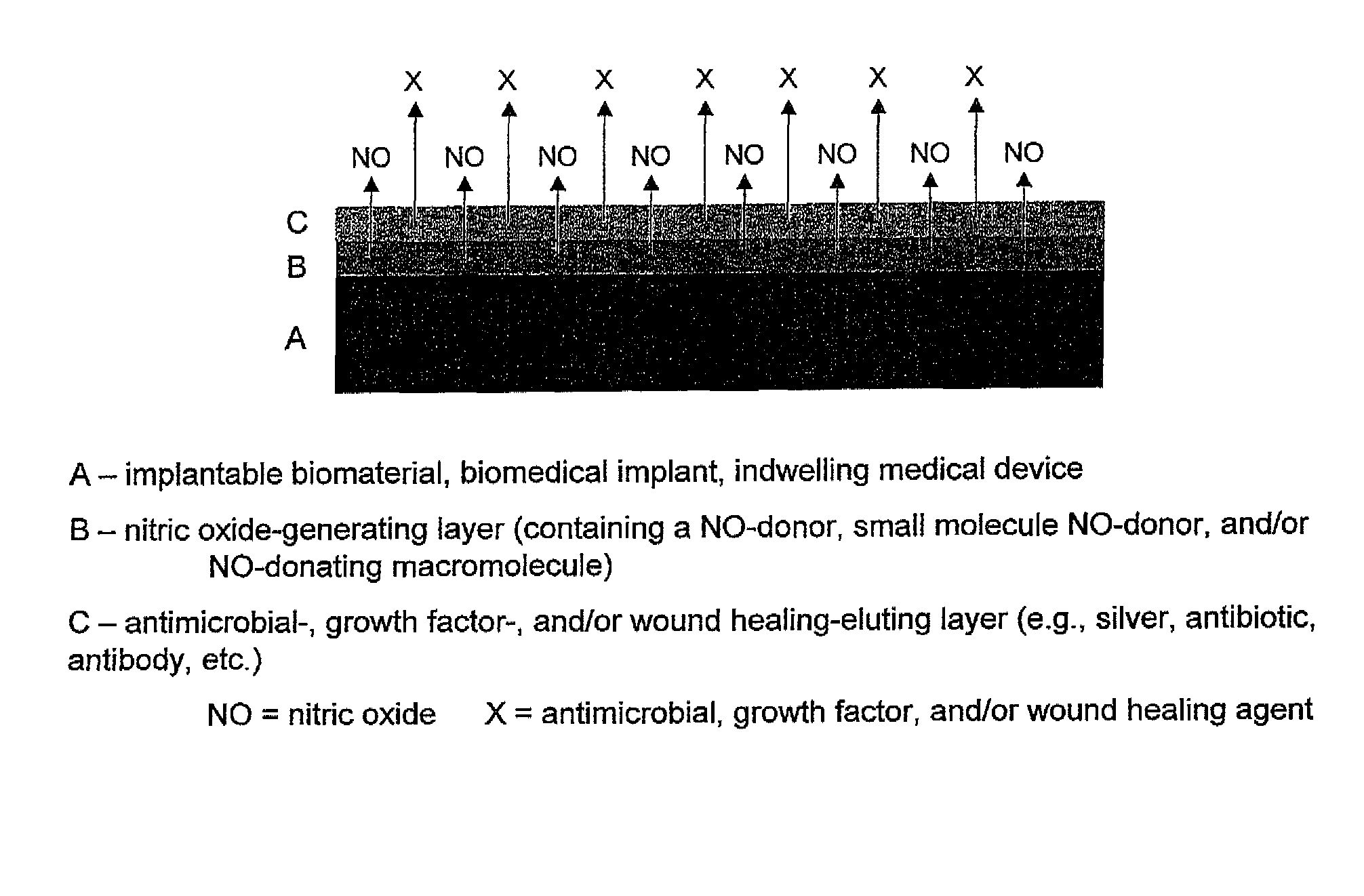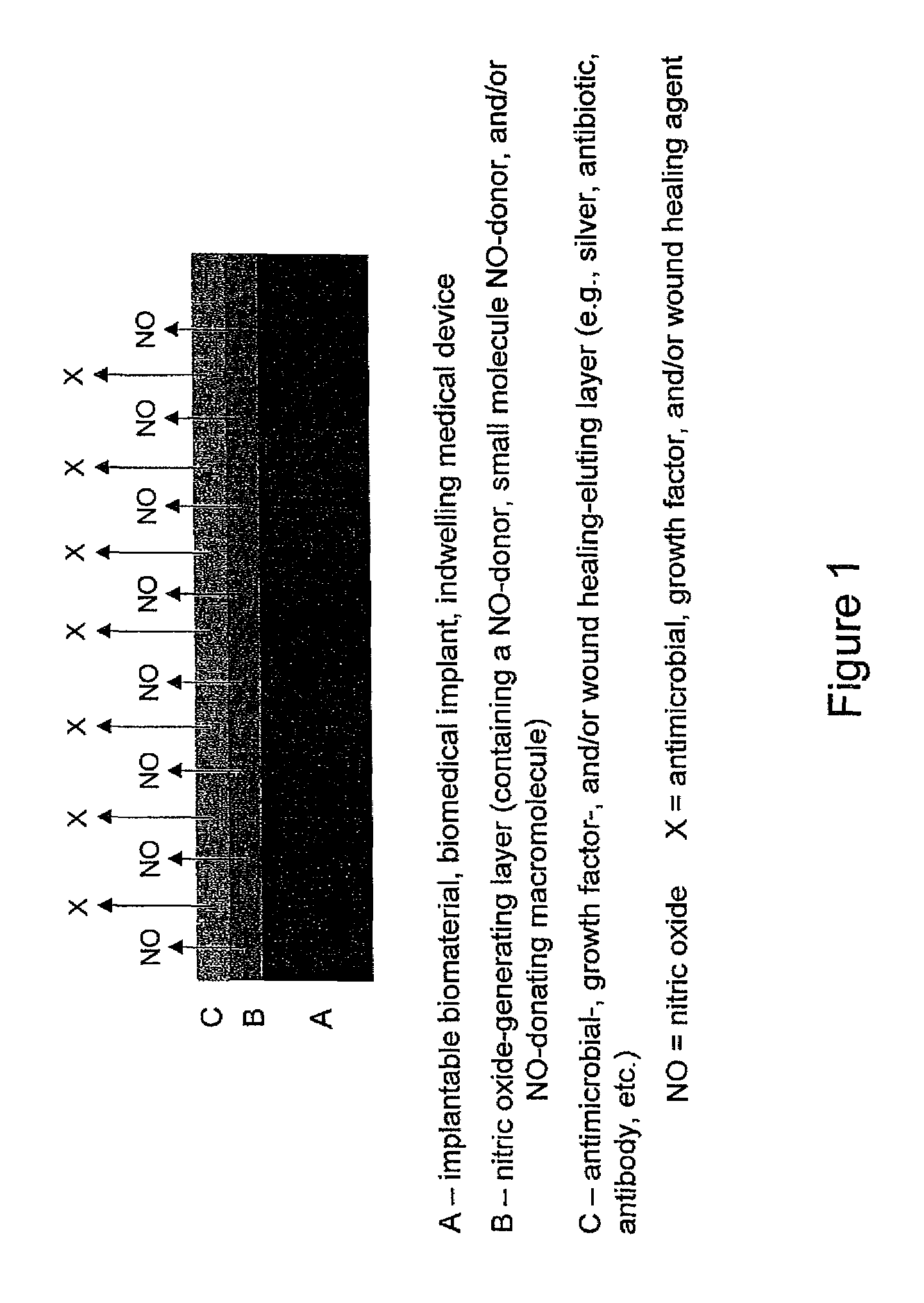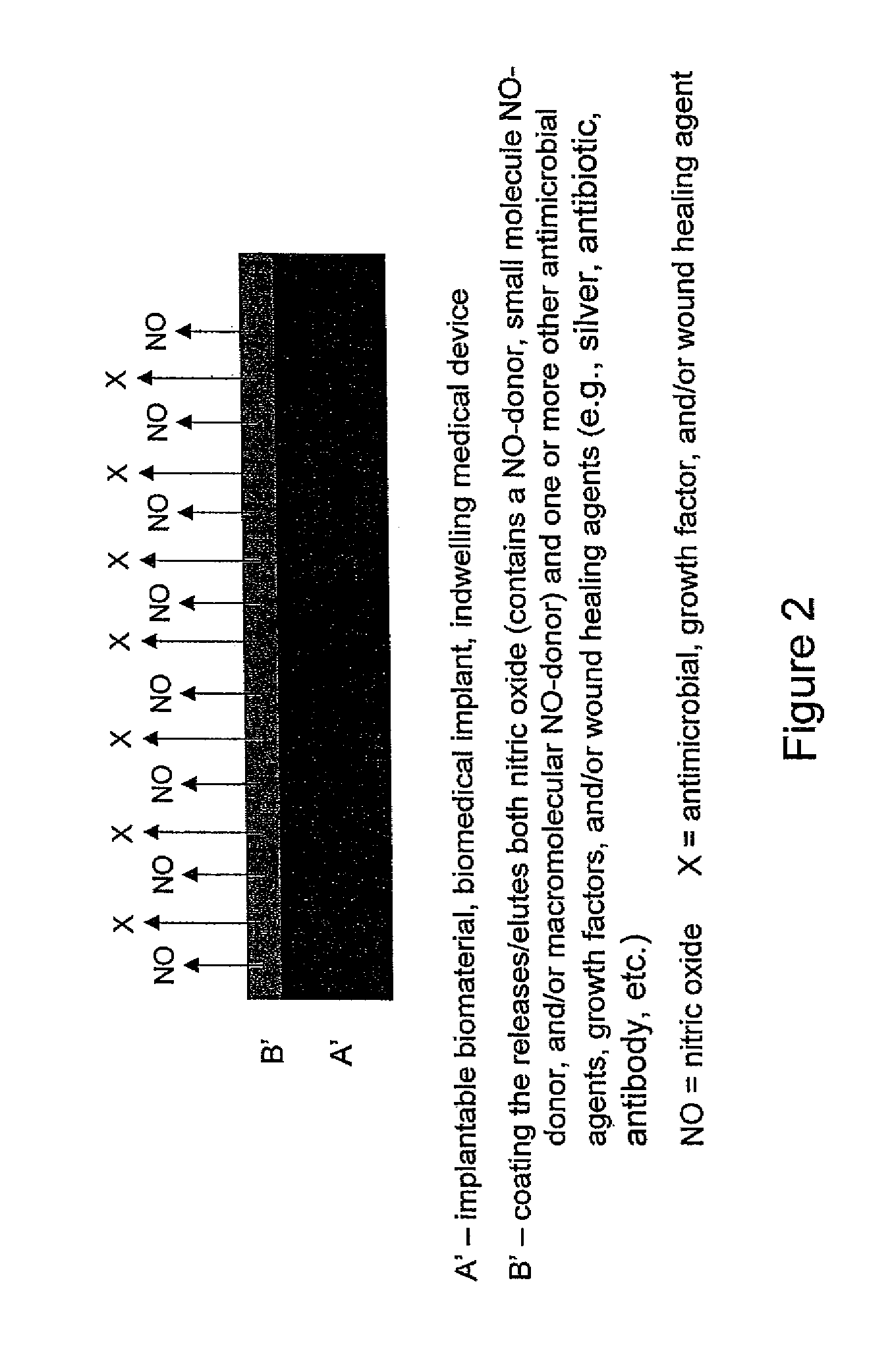Use of nitric oxide to enhance the efficacy of silver and other topical wound care agents
a technology of nitric oxide and topical wound care, which is applied in the field of combined administration of nitric oxide and a second therapeutically active agent, can solve the problems of bacteria infections becoming the most common cause of infectious disease-related death, and achieve the effects of promoting wound healing, reducing implant-related infections, and promoting wound healing
- Summary
- Abstract
- Description
- Claims
- Application Information
AI Technical Summary
Benefits of technology
Problems solved by technology
Method used
Image
Examples
example 1
Silver Sulfadiazine and Nitric Oxide as Synergistic Biocides
Materials / Methods
General Silver sulfadiazine (AgSD) and proline were purchased from Sigma. Tryptic Soy Broth (TSB) and Tryptic Soy Agar (TSA) were purchased from Difco. L929 cells were obtained from ATCC (ATCC CCL1).
[0099]Determining the Minimum Bactericidal Concentration (MBC120). Before the synergistic effects of NO and AgSD could be compared, the concentration of each necessary to achieve three logs of killing within 120 min was first obtained. This value, the MBC120, was acquired by growing S. aureus to an OD600=0.075 in TSB. At this value the concentration was determined to be 108 CFUs / mL. In order to achieve a final bacterial concentration of 104, four ten-fold dilutions were performed in TSB. The bacterial suspension was then immediately added to the proli / NO or the AgSD previously aliquoted into 1.5 mL eppendorf tubes and vortexed for dissolution. For proli / NO, 1 mL of 2×104 CFUs / mL bacterial solution was added to v...
example 2
Synthesis and Bactericidal Efficacy of Nitric Oxide-releasing Silica Nanoparticles
[0106]Characterization of NO-releasing silica nanoparticles and PROLI / NO. Shin et al. previously reported the synthesis and characterization of NO-releasing silica nanoparticles. See Shin, J. H.; Metzger, S. K.; Schoenfisch, M. H., J. Am. Chem. Soc., 129, 4612-4619 (2007). Herein, a slightly modified procedure was followed to improve the NO storage of the silica nanoparticles, whereby the AHAP3 precursors were modified with diazeniumdiolates prior to condensation with TEOS to form the nanoparticles, shown in FIG. 6. The formation of diazeniumdiolate-modified AHAP3 precursors (i.e., AHAP3 / NO) prior to co-condensation with TEOS enabled the incorporation of aminoalkoxysilanes up to 45 mol % without aggregation. By forming diazeniumdiolates on the AHAP3 precursor prior to nanoparticle synthesis, particle aggregation was reduced due to decreased hydrogen bonding interactions between amines during particle f...
example 3
Confocal Microscopy Studies Evaluating the Bactericidal Efficacy of No Delivered from Nanoparticles as Compared to PROLI / NO
[0131]To better understand the enhanced bactericidal efficacy of NO delivered from nanoparticles compared to PROLI / NO, fluorescein isothiocyanate (FITC)-modified silica nanoparticles were synthesized to visually determine if any nanoparticle interaction with P. aeruginosa cells existed. After synthesis of the nanoparticles, characteristic MC fluorescence was observed at 500-530 nm when the particles were excited at 488 nm. Incorporation of FITC into the silica nanoparticle scaffold did not significantly alter the NO-release properties of the nanoparticles (data not shown) or the particle diameter (124±13 nm vs 136±15 nm with and without FITC, respectively). With the FITC-modified silica nanoparticles, confocal fluorescence microscopy studies were conducted to determine if the enhanced bactericidal efficacy of the nanoparticles was due to nanoparticle interaction...
PUM
| Property | Measurement | Unit |
|---|---|---|
| weight | aaaaa | aaaaa |
| molecular weight | aaaaa | aaaaa |
| diameter | aaaaa | aaaaa |
Abstract
Description
Claims
Application Information
 Login to View More
Login to View More - R&D
- Intellectual Property
- Life Sciences
- Materials
- Tech Scout
- Unparalleled Data Quality
- Higher Quality Content
- 60% Fewer Hallucinations
Browse by: Latest US Patents, China's latest patents, Technical Efficacy Thesaurus, Application Domain, Technology Topic, Popular Technical Reports.
© 2025 PatSnap. All rights reserved.Legal|Privacy policy|Modern Slavery Act Transparency Statement|Sitemap|About US| Contact US: help@patsnap.com



